Frog breeding technology, entrepreneurship and wealth technology
How to raise frogs? As for the feeding value of frogs, we all know that frogs are a delicacy on the dinner table. Due to the prohibition of capturing wild frogs and the increase of market demand, artificial breeding of frogs is profitable. If the breeding technology is good, the economic benefits are very objective. So how to raise frogs? For the artificial breeding technology of frogs, many people do not understand, compare this is a new special breeding project?
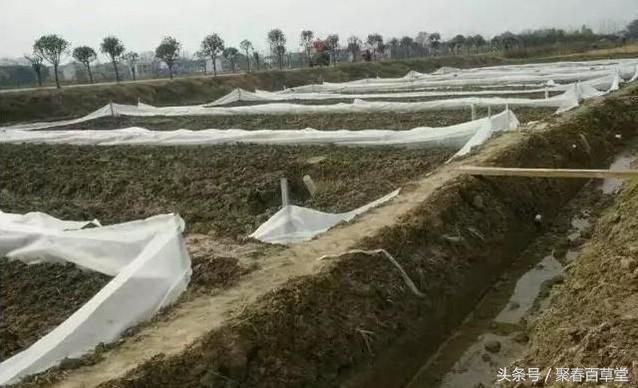
I. Construction of frog ponds
The size of the frog pond can be flexibly controlled according to the actual situation. The frog pond is surrounded by a brick wall fence with a height of more than 1.5 meters to prevent frogs from escaping or being preyed on by snakes. It is best to build frog ponds near your home to facilitate management. Both ends of the frog pond shall be provided with water inlets and drains respectively, and sealed with iron sticks and close-eye nylon nets to prevent escape. Water plants and small shrubs should be planted around the frog pond to facilitate adult frogs to inhabit.
Frog ponds are divided into spawning ponds, tadpole ponds and adult frog ponds. Generally, it is appropriate to choose places that are both wet and warm from the sun, with long cement ponds or soil ponds as appropriate. The field pool of 4 × 6 meters is a single pool, with cement on the wall and soil at the bottom; the courtyard pool is generally 1 × 1.5 meters to 2 meters, with a depth of 1 meter, with irrigation holes and drainage channels, and a water depth of 20 cm to 50 cm. The surface of the pool must be equipped with a shade board. Generally, 40 adult frogs can be raised per square meter. Frog culture ponds can be used in soil ponds, brick ponds and rice fields, and the key is to prevent escape. If you have the conditions, you can build a brick fence or a net, which is generally 1 to 1.2 meters high. The water depth in the pond is 30cm to 60cm, and the middle or sunny side of the water is piled into a mound for frogs to live on land, accounting for about 1x3 of the total pollution. Grow grass or crops on the mound. Put a small amount of floating aquatic plants into the pool water. The pond used to breed tadpoles leaves only a small amount of land area for abnormal young frogs to land. The cement pond is better for the tadpole pond, and the slope of the pool wall should be gentle to inhabit the tadpoles.
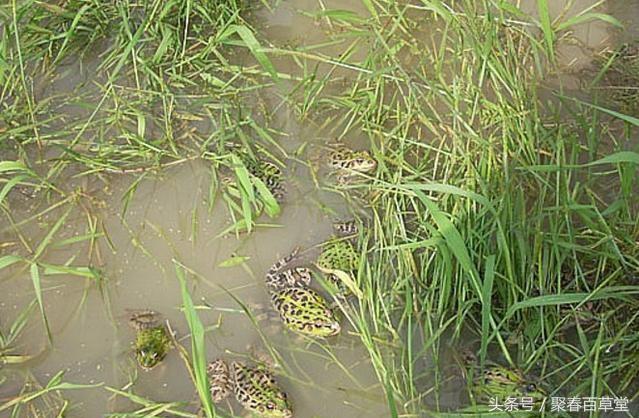
II. Nursing care of breeding frogs
Before the cold winter comes every year, the pool water should be drained, but it should always be kept moist so as to create favorable conditions for frogs to hibernate in mud holes.
Artificial reproduction is the key to the feeding technology of frogs, because wild field frogs often have a parasite with double-groove cercariae parasitic in their muscles, and the method of artificial spawning and isolation of adult frogs can effectively prevent the disease. The frog density is about 1 group per 3 square meters (better before May). Planting frogs requires individual hypertrophy, and parent frogs that have been in production for 1 or 2 years are preferred. The mixed stocking ratio of male and female is 3:1, and the stocking density is relatively less than that of meat frog. It takes about three years from young frog to sexual maturity.
Frog management: strengthen the feeding of protein feed, mainly earthworms, supplemented by moths. To maintain the normal balance of the pool water, it is necessary to be fat and live. When the water temperature is stable at about 22 ℃, be ready to lay eggs and hatch (when the male frogs keep singing). Female frogs of more than 50 grams can lay many eggs at a time. Generally speaking, males and females hold each other and lay eggs on aquatic plants. The frog eggs are yellowish and round, floating on the aquatic plants in pieces attached to the glial egg membrane, which can be easily identified.
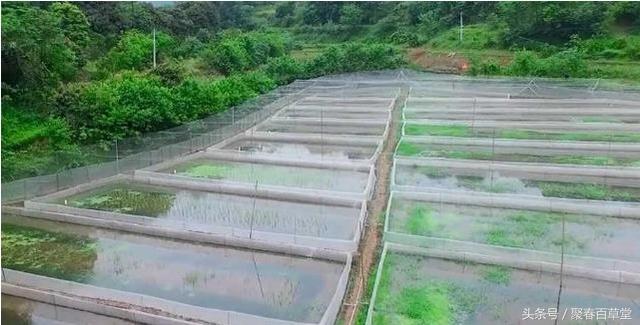
Third, breeding frogs to breed tadpoles:
After the sting season every spring, an appropriate amount of live water should be put into the frog pond to let the female frog breed tadpoles. After breeding tadpoles, frogs should be isolated to prevent them from swallowing tadpoles.
1. Spawning: the artificial spawning ground needs still water, and the cage spawning method is generally used, that is, frogs are forced to lay eggs in baskets or cages. Female and male frogs with a ratio of 1 ∶ 1 can also put 5 spawning baskets or cages for 20 square meters of spawning. The depth of the pool should be kept at 10-15 cm and the water temperature should be kept at 10 ℃-11 ℃. In order to improve the hatching rate, the egg slices can be protected with a purse seine to avoid the interference of parent frogs.
2. Hatching: the temperature of frog fertilized eggs should be kept at 20 ℃ ~ 28 ℃ during the incubation period, mainly natural hatching, and plastic film covering hatching method and anhydrous hatching method can also be used. Generally, tadpoles can be hatched in 3 to 5 days. Newborn tadpoles rely on the egg membrane to survive safely, do not stir the pond water casually, wait for all the frogs to lay eggs, grab the frogs out of the pool, so as not to interfere with the hatching and tadpole living environment. After 5 days of hatching, eggs can be fed with concentrate feed, such as soybean milk, egg yolk, water fleas and plankton in the water, twice a day, but the amount of bait should not be too large, so as to avoid the deterioration of water quality and the death of tadpoles. Tadpoles can be reared in the pond after one week of feeding.
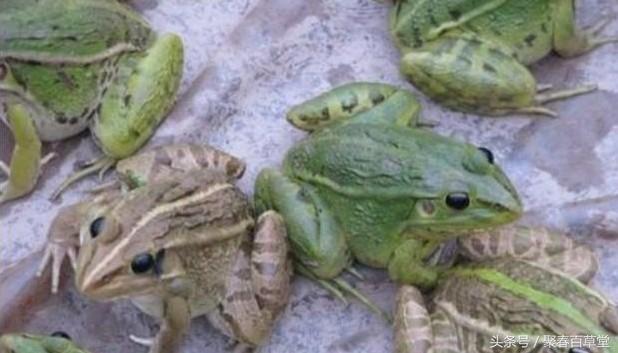
IV. feeding and management of tadpoles
Edible frogs must be raised and hatched after artificial egg collection, and the tadpoles after hatching are cultivated in the original hatching pond or cage, with 600 eggs per square meter of water surface. The tadpoles were artificially fed on the 4th day after hatching, and the tadpoles need to be reared for a week and then moved into the breeding pond. After about 20-30 days, they gradually feed on red worms, water fleas and fly maggots, as well as soybean milk, soybean dregs, bean cake powder and Chlorella. Feeding a certain amount of fish meal can promote its growth. Generally, 15 cooked eggs are crushed and fed with water for 1 time per 10, 000 tails. After the fifth day, soybean milk, wheat bran, bean curd dregs or rice bran and fish meal were used. The feed was put on the feed table, and the powdered bait was first thickened with water and then splashed.
Tadpole pre-metamorphosis management: when there are bubbles in the pool water or the water quality has a rotten smell, change the new water immediately, generally every 3 days, dry weather for many days, continuous high temperature, change the water every 2 days.
Tadpole metamorphosis management: frog eggs become young frogs about 70 days after hatching. During the period from the appearance of forelimbs to complete metamorphosis, tadpoles mainly rely on the absorption of tail supply, breathe air on their lungs, and begin to jump out of the water to land and perch. When more than 90% of tadpoles become young frogs, they can be reared in young frog ponds.
Tadpole bait attention: 1, feed live feed. As small tadpoles feed on young animals, tadpoles such as water fleas, wigglers or other small frogs should be often put for their consumption. These young animals can generally be caught in paddy fields, ponds, dead ditches and other water. 2. Enough bait should be given. Because the small tadpoles will eat small and kill each other in the case of lack of food, so the bait should be sufficient, so that the small tadpoles have bait to eat at any time.

V. feeding and management of young frogs
1. Graded feeding and intensive domestication: because frogs are ferocious, it is very common for big frogs to eat small frogs and other law of the jungle. In order to put an end to this phenomenon, frogs of the same size should be raised in different levels, and they should be fed together. So that they can eat enough food, so that they will not eat each other.
Screening, grading and separate breeding: when young frogs are domesticated for 20 to 30 days, the pond water should be drained, and the large size young frogs should be transferred to the frog pond at the density of 60: 80 per square meter, while the small size young frogs should still be domesticated in the original pond. Using bait, indoor three-dimensional, multi-layer box cage intensive culture, is a new method of breeding frogs. Raising frogs in plastic boxes and wooden boxes, the production of small-scale breeding is extremely high, hundreds of frogs can be raised per square meter, generally from hatching to adult frogs, it only takes 5 months.
Intensive domestication: intensive captivity with high density can be kept in a cement pool with smooth inner wall and a height of more than 1 meter at a density of 100 to 150 animals per square meter. the water depth of the pool is about 20 centimeters, and a bait platform is placed on the surface of the water. There is no land in the pond, forcing the young frogs to concentrate on feeding and perching.
2. Food sources: frogs have various food habits. Earthworms, insects, small fish, shrimp, crabs, snails and clams are all their delicacies. In order to ensure that the source of the bait can contact the vendors of water basin chickens and ducks in the nearby town market, give them an appropriate deposit and require them to collect and provide themselves with the chicken, duck crop and small intestines and lungs abandoned every day, and then cut it up as bait. You can also boil some tea bran and pour it into fertile soil such as banana roots, tree roots or garbage dumps. Soon, a lot of earthworms will be drilled out for people to catch as bait.
3, bait domestication: because frogs like to hunt in the water, do not like to hunt on land, so the bait should be put into the surface of the pool to facilitate frogs to hunt. First, it was fed with fresh bait for 1-2 days, and 20% artificial feed was added to the bait on the 3rd day, and then increased day by day, and increased to 80% of "live bait" feed 10 days later. There are mainly earthworms, maggots, small fish and shrimp, insects, scorpion cattle and Loach; "dead bait" refers to dried silkworm pupae, animal viscera and formula feed. In order to move with quiet, "dead bait" activation, and finally over to the complete intake of artificial bait. At the same time, it requires timing, quantification and positioning of feeding. Feeding time, spring and autumn around noon, summer in the evening or morning, feeding once or twice a day, each feeding should be finished in about an hour. The feeding amount of young frogs weighing less than 50 grams should account for 60.8% of their body weight, and that of young frogs weighing more than 100 grams should account for 80.8% of their body weight. Bait should be fresh, clean and nutritious.
4. Precautions: there is fertile soil dozens of centimeters thick at the bottom of the frog pond; water contaminated by pesticides, chemical fertilizers or industrial waste water should be strictly prevented from flowing into the frog pond.
VI. Feeding and management of adult frogs
After the young frog is transferred into the adult frog pond, the frog has a large food intake and a faster growth rate, which is an important period for the formation of commercial yield. in addition to sufficient food supply, tadpoles need to increase the feeding of animal feed when they become frogs. It is mainly artificially cultured live baits with high protein and high reproduction rate, such as fly maggots, earthworms, red worms, Chlorella fleas and so on. In the case of insufficient live bait, it can be matched with mixed feed, such as 60% of rapeseed cake (powdered), 30% of rice bran (or wheat bran), 5% of soybean meal and 5% of fish meal. Tadpoles are active in the water and can provide concentrate feed for soybean milk, egg yolk, water fleas, cabbage, tomatoes and plankton in water after 5 days. In addition, to raise earthworms on the mound, as long as some lime water with a concentration of 35% is sprinkled on the mound every evening, the earthworms will pour out their nests and act as frog bait. It is also necessary to feed some formula feed in an appropriate amount, separate and raise in time, and adjust the feeding density. After one month of feeding, when the body weight of adult frogs reached 100 grams, the feeding density was 30 per square meter, and changed to 10 eggs per square meter 2 months later. After short-term breeding, it can become a commercial frog on the market.

- Prev
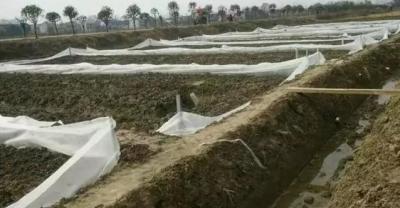
Key points of Frog Culture techniques
First, the successful case of frog farming at the end of 2014, Wang Anwei and other three people jointly invested 150000 yuan to set up a frog farm, leasing 7 mu of paddy fields, digging ditches and weaving encirclement.
- Next

Large-scale and high-yield culture techniques of water earthworm
How to raise the yield of water earthworms? The main function of water earthworm is now as high-quality animal protein feed, so with the rapid development of aquaculture,.
Related
- On the eggshell is a badge full of pride. British Poultry Egg Market and Consumer observation
- British study: 72% of Britons are willing to buy native eggs raised by insects
- Guidelines for friendly egg production revised the increase of space in chicken sheds can not be forced to change feathers and lay eggs.
- Risk of delay in customs clearance Australia suspends lobster exports to China
- Pig semen-the Vector of virus Transmission (4)
- Pig semen-the Vector of virus Transmission (3)
- Five common causes of difficult control of classical swine fever in clinic and their countermeasures
- Foot-and-mouth disease is the most effective way to prevent it!
- PED is the number one killer of piglets and has to be guarded against in autumn and winter.
- What is "yellow fat pig"? Have you ever heard the pig collector talk about "yellow fat pig"?

